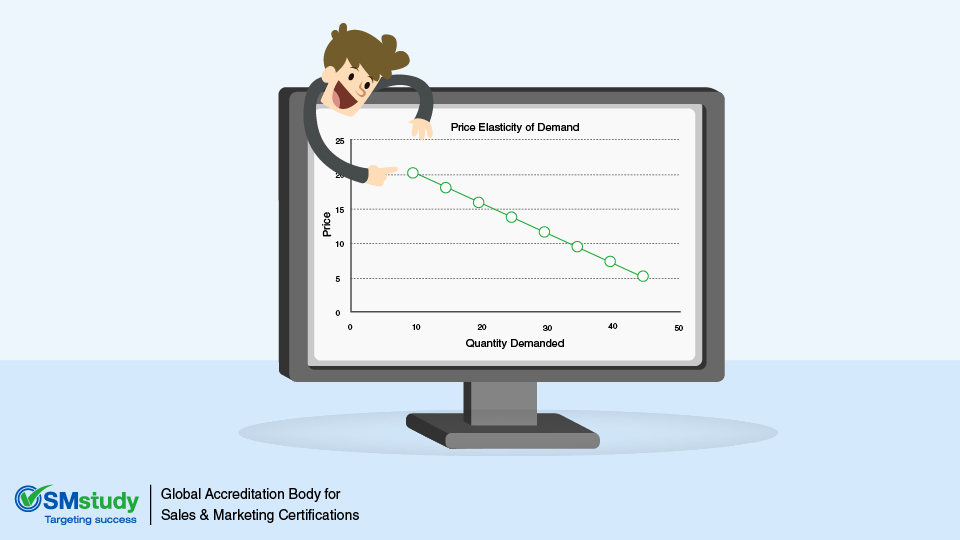Price Elasticity of Demand (PED) is a measure of change in quantity demanded with respect to change in price of the product under consideration when other factors of demand like price of other goods, income and taste kept constant. This is a very important aspect of marketing as it gives a quantitative measurement of the responsiveness of consumers to fluctuations in pricing. Companies use past sales data, competitor data, and primary market research to analyze the price sensitivity of customers in their target market segments.
Mathematically PED is calculated as follows:
PED = (% change in quantity demanded)/ (% change in product pricing)
Since for most of the products, increase in price leads to decrease in demand, PED is almost always negative. But for convenience, economists use the absolute value i.e. a positive number although it is technically a negative quantity. Depending on the absolute value of the PED or degree of elasticity, the demand for a product is classified as “Elastic”, “Inelastic” or “Unit Elastic”.
Elastic Demand – A product or service is said to have elastic demand if a change is price significantly impact the change in demand. In other words a small change in price leads to a greater change in quantity demanded. Hence, demand for a product or service is said to be elastic if the PED coefficient has an absolute value of greater than one. Consumer goods normally show elastic demand as customers either postpone their purchasing decisions or reduce the quantity purchased (e.g., television, computers etc.). Presence of substitutes or competitive products increases the elasticity of demand as consumers have alternative options if a company increases the price of its product.
Inelastic Demand – A product or service is said to have inelastic demand if a change is price does not significantly impact the change in demand. In other words a greater change in price leads to a smaller change in quantity demanded. Hence, demand for a product or service is said to be inelastic if the PED coefficient has an absolute value of less than one. Necessity products such as milks, toothpaste, fuel, water etc. normally show inelastic demand as these class of products are required on a day to day basis and they do not have appropriate alternatives as most these products are provided through government regulated industries.
Unit Elastic Demand - A product or service is said to have unit elastic demand if the percent change in price is directly proportional to percent change in quantity demanded. Thus the PED coefficient for a product or service with unitary elasticity is exactly one. Wine and some other spirits, clothes typically have unit elastic demand i.e. if the price of such product increased by say 30% then the sales will drop by 30% or in other words there will be 30% decrease in demand.
Price elasticity is a major factor in determining the pricing of a company’s products or services. An inelastic demand often allows for a more varied mix of pricing, including promotional pricing and discounting. Marketing research can be conducted using various price points to identify corresponding demands for a product or service. Based on the required profitability and desired market share, the specific pricing for a product or service is then decided.
To learn more about price elasticity of demand, visit www.SMstudy.com/articles

